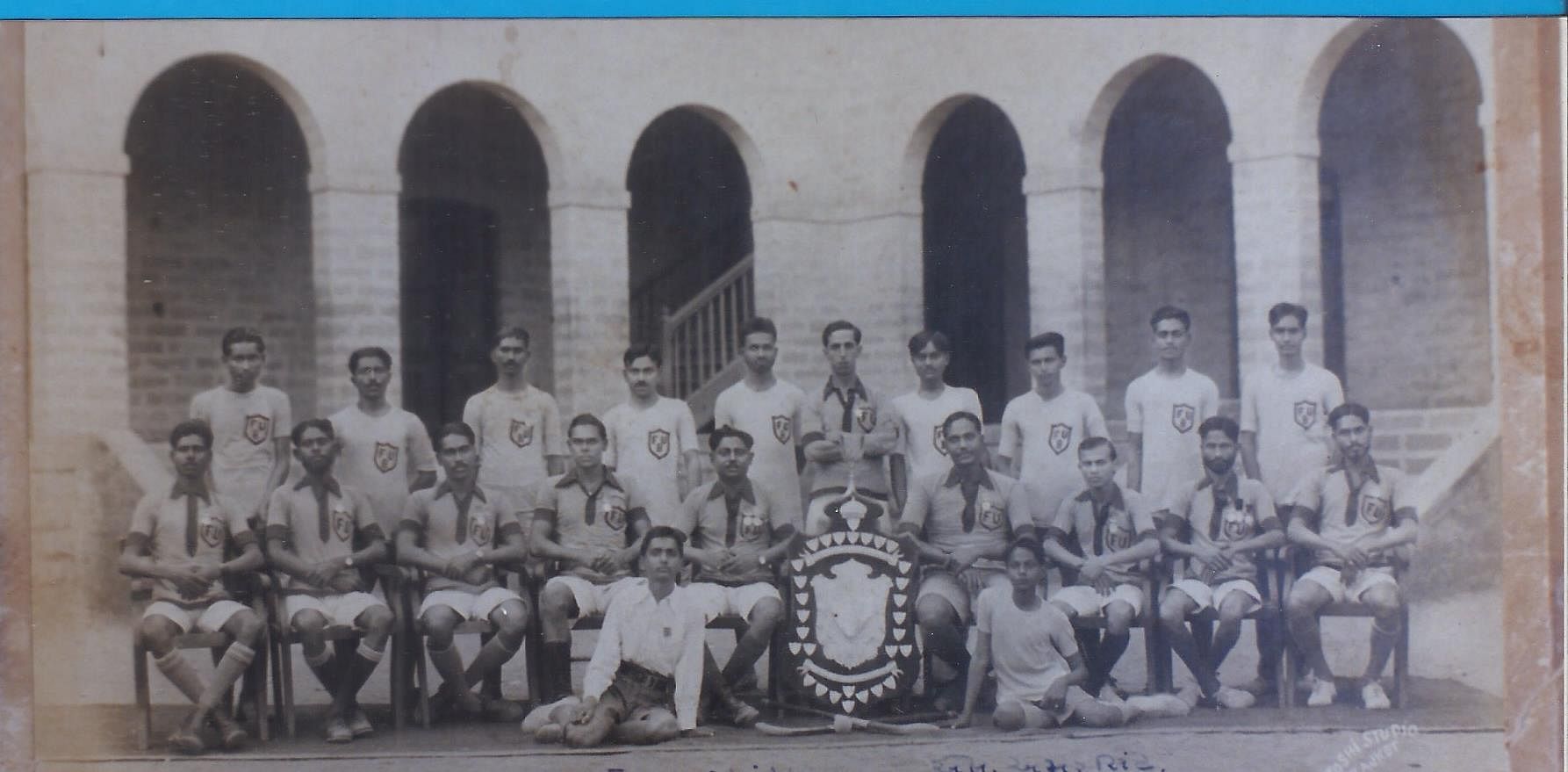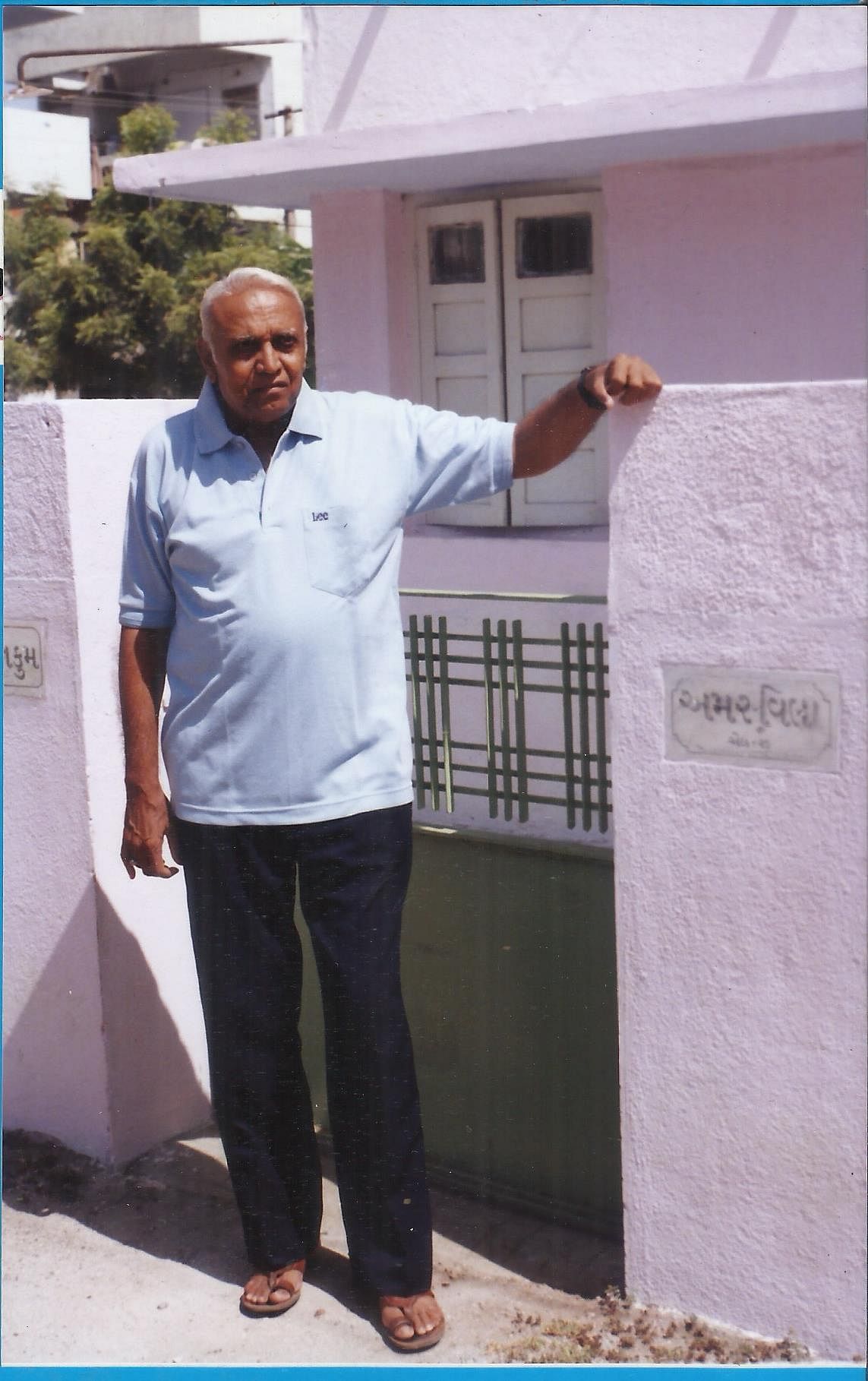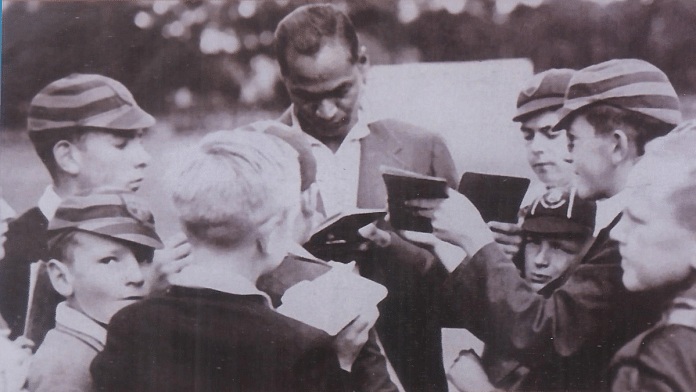In the late 19th and early 20th centuries, cricket in India was more of a royal affair than a sport. It flourished in the 222 princely states in Saurashtra in Gujarat. The captain and the vice-captain of the first Indian Test cricket team were Maharaja Natvarsinh from Porbandar and Prince Ghanshyamsinh from Limbdi. Prince Ranjitsinh of Nawanagar, which is now Jamnagar, was a legendary batter in the 1890s before he assumed the throne to become Jam Saheb. But the one who conquered the game in India and made many fans in England with his all-round performance was Amarsinh of Rajkot.
Belonging to a humble background, Amarsinh was the first Indian cricketer to play professional league cricket in England in 1932. He was a formidable bowler, an excellent batter, and a sharp fielder too. The Amarsinh-Mohammed Nissar duo is considered to be the first pace-bowling pair in the history of Indian cricket.

The great English batter Wally Hammond said that Amarsinh was “as dangerous an opening bowler as I have ever seen, coming off the pitch like the crack of doom.” Len Hutton, another legendary English batter, who played against Amarsinh in the County Championship, declared: “There is no better bowler in the world today than Amar Singh.”
Also read: Soviet-inspired animal universe that charmed Gujaratis—Hariprasad Vyas’ Bakor Patel stories
When Amarsinh shot to popularity
Born Amarsinh Ladhabhai Nakum in 1910, the cricketer got his first lessons in the game at Alfred High School, Rajkot, now called Mahatma Gandhi Museum after its most famous alumnus. His father, Ladhabhai, was a state sub-contractor. Early on, Amrasinh decided that he wanted to become a batter. But his coach, Velji Master, considering his physique, suggested he should focus on pace bowling instead. Amarsinh’s older brother, L Ramji, was already a known and somewhat infamous fast bowler for his bodyline bowling.
Amarsinh’s debut inning in a match between the visiting team of Porbandar and the home team of Rajkot made him very popular. In a long conversation in 2001, his son Vijay Nakum told this author what transpired during the match. The home team had started losing wickets. A student-spectator at the time, Amarsinh offered to volunteer. Rajkot had nothing to lose, so he was allowed. With a long shirt, ragged trousers, and black leather shoes, the youngster arrived on the pitch and tackled the Porbandar team’s bowling in what would become his characteristic style. Prince Duleepsinh, the nephew of Jam Ranji, saw this performance and offered Amarsinh a job in the Navanagar state.
Saurashtra had four teams representing respective regions: Sorath, Halar, Zalawad, and Gohilwad. Amarsinh and Ramji played for Halar, a team for which Jam Ranji played in the early days. In 1930, Amarsinh set the record score for the sixth wicket partnership, amassing 193 runs with Kumar Indravijaysinh. As a bowler, he claimed nine wickets in one inning and 16 wickets in a match, a feat in Saurashtra cricket at the time.
Both Amarsinh and Ramji were strong contenders for the Indian cricket team going to England to play the first Test series in 1932. But Maharaja Bhupinder Singh of Patiala, the captain of the Indian cricket team and Maharana Natwarsinh of Porbandar, who replaced him due to the latter’s health issues, hated Ramji. Both had been up against Ramji, a lethal bowler. Amarsinh’s chances were jeopardised just because he was Ramji’s younger brother.
According to Vijay Nakum, Prince Duleepsinh persuaded the Maharaja of Porbandar and assured him that Jam Saheb would bear Amarsinh’s expenses if he failed. The arrangement worked perfectly — Amarsinh did not disappoint and made his mark in England.
In the Test match at the Lord’s Stadium, Amarsinh took two wickets each in both innings, bowled the highest number of overs, and scored 51 runs in the second inning, the highest score from the Indian side in the match. The figures hardly show the real charisma of Amarsinh’s game, though. He emerged as the best Indian all-rounder. In line with the trend of signing famous cricketers for county cricket, Colne Cricket Club, a team playing under Lancashire County, approached Amarsinh and signed him with much fanfare in 1934.
Also read: Gujarati Dalit Kanjibhai Rathod was Bollywood’s 1st professional director, made 50+ silent films
Close friendships
Amarsinh played county cricket at Lancashire for four years and a year at Burnley. His presence alone could charge the environment up, and cricket fans were elated to see him playing. He also brought his wife Maniben and young son Vijay to England during one of his cricketing seasons. Amarsinh played only seven Test matches in his career, but many matches in England and local tournaments back home, including for the Ranji Trophy started in the memory of Jam Ranji.
When I met Vijay Nakum at his small bungalow Amar Villa at Rajkot in 2001, he showed mementoes and rare photographs and shared many stories. Amarsinh had such a close friendship with fellow cricketer Vijay Merchant that the two named their sons after each other. Vijay heard that Vijay Merchant kept a file of cuttings depicting the achievements of Amarsinh. When he would pass a cutting to Amarsinh, he would refuse to accept it with a smile and reply, “You keep it with you. I shall create a better record.” Incidentally, both Amar Merchant and Vijay Nakum met after their fathers’ deaths and Amar returned a gold medal gifted to Vijay Merchant by Amarsinh.

Amarsinh died when he was just 29. According to Vijay, he had gone to attend a wedding in his friend’s family, the Khan of Manavadar. Upon returning, he caught a fever, which proved to be fatal, abruptly ending an eventful and shining career.
(Edited by Humra Laeeq)



